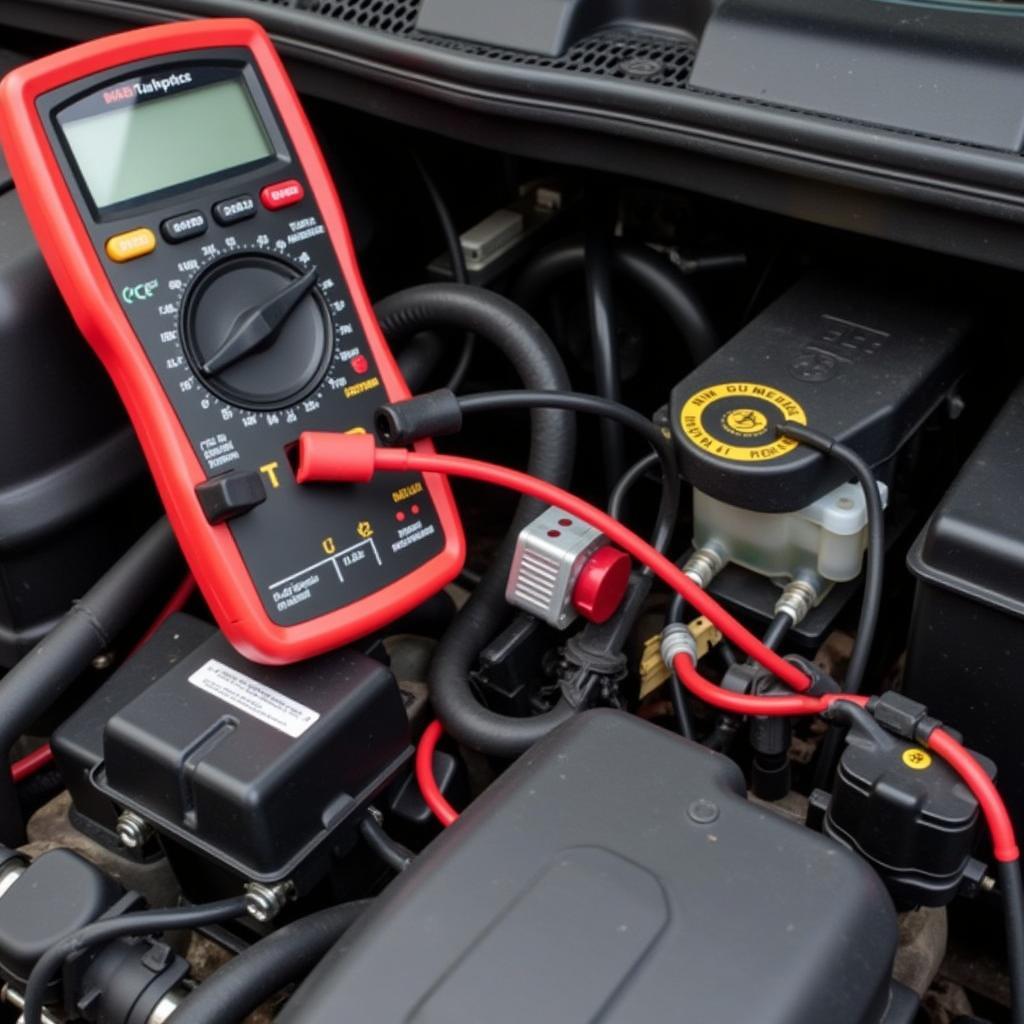Troubleshooting a car that won’t start can be frustrating. However, by systematically checking a few key components, you can often pinpoint the problem and even fix it yourself. This guide focuses on How To Diagnose Car Starter Problems, empowering you to get back on the road quickly.
One of the first things to check is your battery. A weak or dead battery is a common culprit when your car won’t start. You can test the battery voltage using a multimeter. If the reading is low, it might be time for a jump-start or a new battery. Can a GPS tracker cause starting problems on your car? Surprisingly, yes. Sometimes, a faulty GPS tracker can drain your battery, leading to starting issues.
Common Car Starter Problems and Solutions
Several issues can prevent your starter from doing its job. Let’s explore some common car starter problems and how to diagnose them.
Is it the Battery or the Starter? How to Tell
First, check your car’s battery. If the battery is good, the problem likely lies elsewhere, potentially with the starter. Listen carefully when you turn the key. A clicking sound often indicates a faulty starter solenoid, the electrical switch that activates the starter motor. No sound at all could suggest a wiring problem or a completely dead starter. Sometimes, a car won’t start due to transmission problems; however, we are focusing on the starter here.
Testing the Starter Motor Directly
For a more definitive test, you can try testing the starter motor directly. This involves bypassing the ignition switch and sending power directly to the starter solenoid. If the starter engages when you do this, the problem likely lies in the ignition switch, neutral safety switch, or related wiring. How to diagnose a car starter problem often comes down to this direct test.
Using a Multimeter for Car Starter Diagnostics
A multimeter is your best friend when diagnosing car starter problems. You can use it to test the battery voltage, check the starter solenoid for continuity, and test the wiring for shorts or open circuits.
 Using Multimeter for Starter Diagnosis
Using Multimeter for Starter Diagnosis
Checking the Starter Solenoid
Use the multimeter to check the voltage at the starter solenoid when you turn the key to the “start” position. If there’s no voltage, the issue is likely upstream of the solenoid, possibly in the ignition switch or wiring. If there is voltage at the solenoid but the starter doesn’t engage, the solenoid itself is likely the culprit.
“A bad starter can manifest in several ways,” explains automotive expert John Smith, ASE Certified Master Technician. “From clicking sounds to complete silence, understanding how to test different components will narrow down the issue quickly.”
Beyond the Starter: Other Potential Culprits
While the starter is often the problem, it’s not the only possibility. Problems with your car’s electrical system, such as a bad ignition switch, faulty wiring, or even a blown fuse, can also prevent your car from starting. If you suspect an electrical problem, knowing how to find electrical problems in your car is crucial. You can refer to guides or consult with a qualified technician. You can learn more about issues when your car won’t start transmission problems.
“Don’t overlook simple things like corroded battery terminals,” adds Maria Garcia, another seasoned automotive technician. “A thorough visual inspection can sometimes save you time and money.”
Conclusion: Getting Your Car Started Again
Diagnosing car starter problems can seem daunting, but by following these steps and using the right tools, you can often pinpoint the issue yourself. How to diagnose a car starter problem involves checking the battery, testing the starter solenoid, and using a multimeter to check the wiring. If you’re still having trouble, don’t hesitate to contact a qualified mechanic. Remember, a little knowledge can go a long way in getting your car back on the road. For assistance, connect with AutoTipPro at +1 (641) 206-8880 or visit our office at 500 N St Mary’s St, San Antonio, TX 78205, United States.
“Remember, safety first! Always disconnect the negative battery cable before working on any electrical components in your car,” advises John Smith. This crucial step can prevent accidental shorts and protect you from harm.





Leave a Reply